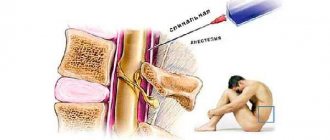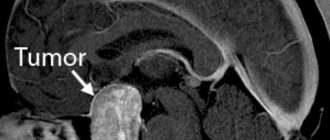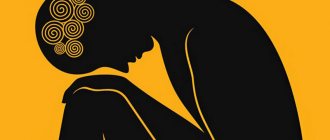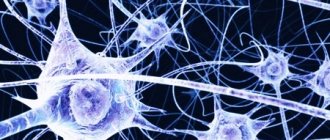Nowadays we hear the definition of “vegetative-vascular dystonia” everywhere.
Its owners are 80% of the population. Generally speaking, this condition occurs due to an imbalance in the functioning of the nervous system and includes about 150 symptoms. It requires an integrated approach to treatment, including medication. The drug Glycine for VSD has a fairly effective effect, since its main work is aimed at normalizing nervous processes. It is prescribed for almost every case of dystonia, but the intensity of the drug’s effects depends on the form of the condition and some other factors.
The essence of the process
It turns out that the list of the International Classification of Diseases does not include such a disease as vegetative-vascular dystonia. Therefore, it is classified as a symptom complex that can accompany many ailments.
VSD develops due to improper functioning of the autonomic nervous system, which regulates the functioning of internal organs, glands and blood vessels. When it fails, the activities of the listed structures are disrupted. Therefore, VSD is accompanied by such a wide range of symptoms:
- pain of varying localization and intensity. It is permanent;
- pain in the heart, palpitations;
- prostration;
- breathing disorder;
- cold extremities;
- sleep disturbance;
- dizziness and fainting;
- hand tremors;
- decrease or increase in pressure;
- digestive disorders;
- excessive sweating;
- bad mood, irritability, apathy and other mental disorders.
The autonomic nervous system consists of 2 divisions: sympathetic and parasympathetic. By their nature they are antagonists, that is, they perform opposite actions. If the sympathetic system increases the heartbeat, inhibits peristalsis and salivation, reduces the tone of the bladder, dilates the pupil and bronchi, then the parasympathetic system has the exact opposite effect. The parasympathetic division of the NS is activated when we are at rest. The sympathetic nervous system is activated during stressful situations.
Ideally, they should work harmoniously, complementing each other. Then our health is normal. If one of the systems begins to dominate over the other, a malfunction occurs in the body, such as VSD.
There is a theory that this condition is of a congenital, genetic nature. At the same time, a number of changes occur in the ANS, such as excessive or insufficient activity of coordinating centers, disruption of receptor sensitivity and some metabolic processes.
Vegetative-vascular dystonia comes in several types:
- cardiac;
- vascular;
- gastrointestinal;
- respiratory;
- genitourinary;
- musculoskeletal;
- neuropsychic;
- thermoregulating.
All of them are characterized by different symptoms and have their own causes.
Mistake #9. Sports dietary supplements - trust and not test
Some athletes take proteins to accelerate muscle growth and “drying”. One of the most popular today is casein.
, which is made from ordinary cow's milk.
Casein protein is cheap to produce, but it is not suitable for everyone. Why is casein harmful? Once in the body, it turns into casomorphin
, which is addictive and can provoke inflammation of the intestinal mucosa, autoimmune diseases, swelling and lethargy.
Casein protein should not be taken by those who have problems with the gastrointestinal tract, as well as individual intolerance to lactose and casein.
Mistake #10. Not only collagen and hyaluronic acid are beneficial for the skin
After 35-40 years, the skin ages. Many women experience a lack of collagen peptides and hyaluronic acid: in this case, injection cosmetology and capsules come to the rescue as an auxiliary method of combating signs of age-related changes.
However, other components are also beneficial for the skin:
- Sex hormones;
- Vitamin C;
- Sulfur;
- Silicon;
- Iron;
- Zinc.
What is Glycine
Glycine was developed in Germany in 1820. The basis of the drug is a non-essential amino acid with the same name “glycine”. It is also called aminoacetic and aminoethanoic acid. It is formed in the human body, but under certain pathological processes its synthesis may be disrupted.
Glycine is a neurotransmitter in the central nervous system and forms the basis of certain proteins. It causes protective inhibition in the central nervous system, blocks the release of excitatory glutamic acid and stimulates the production of GABA, which is an inhibitory transmitter. By reducing the activity of motor neurons, glycine helps get rid of muscle hypertonicity.
In addition, the amino acid inhibits the activity of alpha-adrenergic receptors, exhibits antioxidant and antitoxic properties, and improves the metabolism of nerve cells. Thus, glycine during VSD suppresses excessive activity of the sympathetic nervous system, helps eliminate overexcitation and restore harmony between the two sections of the VNS.
In addition to aminoacetic acid, the drug contains additional components: methylcellulose and magnesium stearate.
Mistake #1. Not monitoring vitamin D levels
Vitamin D
has a positive effect on insulin resistance and metabolism, the body’s ability to resist acute respiratory viral infections and oxidative stress, and reduces the risk of developing cancer and abnormalities in fetal development during pregnancy. Moreover, “sunshine” vitamin D helps not to feel depressed and reduces pain during childbirth.
In regions with low levels of insolation (including St. Petersburg), vitamin D deficiency is extremely common. However, you should not take it for preventive purposes, since vitamin D is still a steroid hormone. Only after a special laboratory blood test for D-hormone can you find out its level in the body, and then correct the deficiency.
Action for VSD
Glycine helps to cope with many vegetative-vascular disorders: it improves heart function and vascular tone, normalizes blood pressure, and restores thermoregulation.
Due to its neurosuppressive effect it:
- improves sleep;
- relieves psycho-emotional stress;
- activates mental activity;
- increases resistance to stress;
- inhibits motor overexcitation;
- eliminates headaches and dizziness;
- reduces alcohol intoxication;
- helps to adapt to the social environment.
But the question arises: does glycine really help all people suffering from VSD? According to statistics, only 50% of users achieve the desired effect. This group includes people who have a neuropsychic form of dystonia, that is, in which pathological processes are localized in the brain.
With the same form of VSD, patients are characterized by mental disorders in the form of depression, panic attacks, mood lability, aggressiveness, and feelings of tension in crowded places. It is precisely these symptoms that the drug is designed to combat by acting on the nervous system.
It is recommended to resort to the help of Glycine in the following cases:
- stressful situations;
- decreased performance;
- deviant behavior;
- cerebrovascular accidents;
- hyperexcitability;
- sleep disturbances, neuroses.
Vegetative-vascular dystonia requires comprehensive treatment and consultation of many specialists. Most of them, neurologists, psychotherapists, and cardiologists recommend drinking glycine for this condition.
Mistake #5. Ignore Omega-3
Why take Omega-3
polyunsaturated acid? It preserves visual acuity, beauty and protects the vascular endothelium from damage. The brain is 30% composed of Omega-3 fatty acids. The substance is not synthesized in the body independently. Unfortunately, even adherents of the Mediterranean diet do not always get enough Omega-3. The fatty acid is found in fatty fish, flaxseed, sea buckthorn and mustard oils.
Adults should take 2 grams of Omega-3 daily—or more. The exact dosage can be selected after an analysis called the Omega-3 index
.
The advantage of Omega-3 capsules over the same red fish is the good purification of fatty acids from harmful impurities that we can receive along with fish caught in a pond.
Dosage regimens
The drug is available in tablets of 100 mg, 50 pieces in a blister. The dragees are white in color and taste sweet (it’s not for nothing that glycine is translated from Greek glykos as “sweet”).
It is important to know how to take these pills correctly. They are used sublingually, that is, placed under the tongue and dissolved. At the same time, do not drink water.
This method of taking the drug ensures its rapid absorption into the blood and into the brain. This reduces the amount of medication that passes through the liver. This is an important point in using the drug, because once glycine enters the liver, it can be transformed into another substance under the action of transaminase.
The standard regimen for taking Glycine is 1 tablet 2-3 times a day, but no more than 3 tablets per day. Its effect is cumulative, so it is taken for at least 1 week, in some cases 2 or 1 month.
Another feature of the drug is that it is also indicated for children. For children over 3 years old, Glycine is recommended in the same dosage as for adults. For children under 3 years of age, the dose is reduced by 2 times - 50 mg. But it is worth understanding that the decision about how much the drug should be taken and in what quantity is made by the doctor.
What is obsessional neurosis, and does it need to be treated?
The main goal of treatment is to maximize the patient’s quality of life. If a disease interferes with life, then it definitely needs to be treated. Does obsessional neurosis interfere with normal life? To understand this, you need to find out what is commonly understood by this term.
Obsession is the appearance in a person of thoughts or actions that are perceived by him as something alien. A person cannot get rid of them: obsessions force him to perform certain actions, thereby becoming the cause of debilitating mental discomfort.
Complications of taking the drug
Glycine is a drug that is well tolerated by the body. This is due to the fact that the amino acid in its composition is a natural substance for humans. It is quickly absorbed by tissues and causes virtually no side effects. The latter appear in extreme cases and are expressed in the form of drowsiness, weakness and low blood pressure.
The product has virtually no contraindications. It can be taken by adults and children, pregnant women and women during breastfeeding. But it is worth considering that Glycine neutralizes the effect of neuroleptic drugs, sleeping pills, anticonvulsants, and antidepressants.
The only obstacle to treatment with the drug is its individual intolerance. In patients with hypotension it should be used under blood pressure control.
Glycine can be purchased at a pharmacy without a prescription.
Should I take it if I have a neurotic disorder?
No need. But you can if you want. Glycine is safe. No serious side effects have ever been reported from taking it, even in very large quantities.
But since the only way this amino acid can help “from nerves” is to slightly reduce blood pressure, pulse and slightly relax muscles, it is not able to cure a person from neurosis, be it VSD or panic disorder.
Any neurosis is caused by a person’s irrational attitude to the surrounding reality, various cognitive distortions: catastrophization, obligation, overgeneralization, personalization, etc.
Since glycine has no effect on a person's thoughts, it cannot treat neurosis. It can be slightly calming, but only when it was taken in large quantities, and the person sincerely believed in what should help.
Therefore, for any neurosis (VSD, panic, generalized anxiety disorder, etc.), glycine can be taken. But there is no need to do this.
Analogs and derivatives
There are several derivatives of Glycine. In fact, they all have the same active ingredient; the differences lie in the dosage of the drug. So, 1 tablet of Glycine Fortes contains 250 mg of glycine, and Glycine-Canon – 1000 mg.
Considering that the state of the nervous system suffers with VSD, doctors recommend, in parallel with glycine, taking multivitamins based on B vitamins. They help restore the functioning of the central and peripheral nervous system, balance the processes of inhibition and excitation, and improve the passage of nerve impulses. They normalize the functioning of the muscular system, participate in the synthesis of amino acids, neurotransmitters and nucleic acids.
Of these drugs, the most famous are Pentovit and Neuromultivit.
| Comparative characteristics | |||
| A drug | Compound | Mode of application | Well |
| Pentovit | vitamin B1–10 mg; vitamin B6–5 mg; vitamin B12–0.05 mg; folic acid; nicotinamide; | 2–4 tablets 2–3 times/day after meals | 1 month |
| Neuromultivitis | vitamin B1–100 mg; vitamin B6–200 mg; vitamin B12–0.2 mg | 1 tablet 1 time/day | 1 month |
According to reviews, the combination of Glycine + Neuromultivit definitely gives a positive result. Users note that anxiety goes away, concentration increases and performance improves. It is possible to get rid of irritability and depression.
Multivitamins are contraindicated for children, pregnant women and lactation. For this treatment regimen, there is an alternative - the drug Glycine-Vis. This is a complex product that includes Glycine and vitamins B1, B6, B12.
Glycine analogues include phenotropil, tryptophan, piracetam, mexidol. They also belong to nootropic drugs, but their effect manifests itself a little differently, so they will not fully replace glycine.
Glycine is an effective remedy, but there are times when it cannot cope alone. Therefore, doctors prescribe other medications to complement it. For example, picamilon, spasmalgon, banal Corvalol and valerian.
Mistake #7. Ignore iron (ferritin)
Iron deficiency leads to anemia, fatigue, muscle weakness, dry skin, and hair loss. Women are at risk for iron loss due to menstruation; vegetarians and vegetarians do not receive the required amount of this microelement.
Mistake #8. Taking Iron Blindly
In terms of absorption, iron is a particularly capricious microelement. It should be taken with particular caution. The point is not even that the drug in drops stains tooth enamel. Excess iron is deposited in internal organs (liver, pancreas, thyroid gland), leading to serious disorders: hemochromatosis, cirrhosis, hepatitis, melasma (dusty bronze skin color).
Iron is poorly absorbed with dairy products and coffee.
On the contrary, vitamin C, B12, and folic acid contribute to the favorable absorption of iron.
If iron is poorly absorbed, the doctor prescribes special complexes
.








